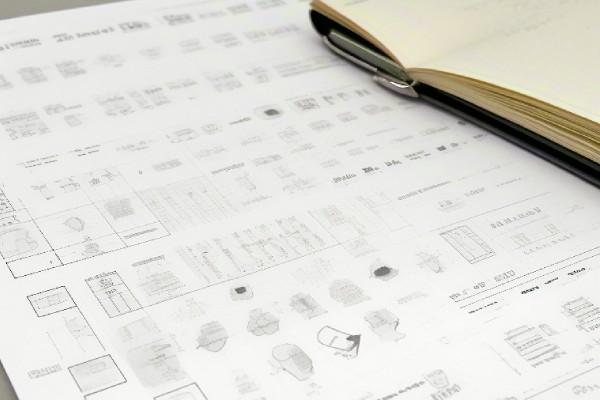Best budgeting apps for families in 2025
In 2025, the landscape of budgeting apps for families has evolved significantly, offering more personalized, intuitive, and collaborative features to help households manage their finances effectively. Here are some of the best budgeting apps tailored for families in 2025:

1. FamilyFlow
Overview: FamilyFlow is a comprehensive budgeting app designed specifically for families. It allows multiple users to connect their accounts, track shared expenses, and set collective financial goals. The app uses AI to provide personalized spending insights and savings recommendations.
Key Features:
-
Shared Budgets: Create and manage budgets that the entire family can access and contribute to.
-
Expense Tracking: Automatically categorizes expenses and provides real-time updates.
-
Goal Setting: Set family financial goals, such as saving for a vacation or a new home.
-
AI Insights: Offers tailored advice on how to reduce expenses and increase savings.
-
Child Accounts: Includes features for teaching kids about money management with allowances and spending limits.
2. HomeBudget
Overview: HomeBudget is a user-friendly app that simplifies family budgeting with its intuitive interface and robust features. It supports multiple currencies, making it ideal for families with international ties.
Key Features:
-
Sync Across Devices: Ensures all family members have access to the latest financial data.
-
Bill Reminders: Sends alerts for upcoming bills to avoid late payments.
-
Expense Reports: Generates detailed reports to help families understand their spending patterns.
-
Debt Tracking: Helps families manage and pay off debts more efficiently.
-
Custom Categories: Allows users to create custom categories for more precise budgeting.
3. PocketGuard Family
Overview: PocketGuard Family is an extension of the popular PocketGuard app, now with enhanced features for family use. It focuses on helping families stay within their budget by providing a clear overview of their finances.
Key Features:
-
In My Pocket: Shows how much money is available for spending after accounting for bills, goals, and savings.
-
Shared Wallets: Allows family members to pool funds for shared expenses.
-
Spending Alerts: Notifies users when they are approaching their budget limits.
-
Savings Goals: Helps families set and track savings goals for various purposes.
-
Security: Uses advanced encryption to protect family financial data.
4. YNAB (You Need A Budget) Family Edition
Overview: YNAB has long been a favorite for personal budgeting, and its Family Edition in 2025 takes it to the next level. It emphasizes proactive budgeting and financial planning, making it ideal for families who want to take control of their finances.
Key Features:
-
Zero-Based Budgeting: Encourages families to assign every dollar a job, ensuring no money is wasted.
-
Collaborative Budgeting: Allows multiple family members to contribute to and manage the budget.
-
Real-Time Sync: Keeps all family members updated with the latest financial information.
-
Educational Resources: Offers workshops and tutorials to help families improve their financial literacy.
-
Goal Tracking: Helps families set and achieve financial goals, from paying off debt to saving for college.
5. Honeydue
Overview: Honeydue is a budgeting app designed for couples and families, focusing on transparency and collaboration. It helps families manage their finances together while maintaining individual financial independence.
Key Features:
-
Joint and Individual Accounts: Supports both shared and personal accounts, giving families flexibility.
-
Bill Tracking: Keeps track of due dates and amounts for all family bills.
-
Spending Insights: Provides insights into spending habits and suggests areas for improvement.
-
Custom Alerts: Allows families to set custom alerts for specific spending categories.
-
Chat Functionality: Includes a built-in chat feature for discussing finances within the app.
6. Goodbudget
Overview: Goodbudget is based on the envelope budgeting method, making it easy for families to allocate funds to different categories and stick to their budget.
Key Features:
-
Envelope System: Digital envelopes for different spending categories help families manage their money effectively.
-
Sync Across Devices: Ensures all family members are on the same page with their budget.
-
Expense Tracking: Tracks expenses and updates envelope balances in real-time.
-
Reports: Provides detailed reports on spending and savings.
-
Debt Tracking: Helps families manage and pay off debts systematically.
7. Mint Family
Overview: Mint has been a trusted name in budgeting for years, and its Family Edition in 2025 offers enhanced features for households. It provides a comprehensive view of family finances, from budgeting to credit monitoring.
Key Features:
-
Unified Dashboard: Offers a complete overview of all family accounts in one place.
-
Budget Alerts: Sends alerts when budgets are exceeded or bills are due.
-
Credit Monitoring: Keeps track of family credit scores and provides tips for improvement.
-
Investment Tracking: Allows families to monitor their investments alongside their budget.
-
Customizable Categories: Enables families to create and manage custom spending categories.
Conclusion
In 2025, budgeting apps for families have become more sophisticated, offering features that cater to the unique needs of households. Whether you're looking for shared budgeting tools, expense tracking, or financial goal setting, there's an app to suit every family's needs. By leveraging these tools, families can achieve greater financial stability and work together towards their financial goals.
How to make the budget for next year
Creating a budget for the next year is a crucial step in achieving financial stability and reaching your long-term goals. A well-planned budget helps you allocate resources effectively, avoid unnecessary debt, and save for future needs. Here’s a comprehensive guide to making a budget for the next year:
1. Review Your Current Financial Situation
Before planning for the future, assess your current financial health. This step provides a baseline for your next year’s budget.
-
Analyze Income and Expenses: Review your income sources and track your spending over the past year. Use bank statements, credit card bills, and budgeting apps to categorize expenses.
-
Calculate Net Worth: List your assets (savings, investments, property) and liabilities (debts, loans). Subtract liabilities from assets to determine your net worth.
-
Identify Trends: Look for patterns in your spending, such as overspending in certain categories or seasonal fluctuations.
2. Set Financial Goals
Define clear, measurable goals for the next year. These goals will guide your budgeting decisions.
-
Short-Term Goals: Examples include building an emergency fund, paying off a small debt, or saving for a vacation.
-
Medium-Term Goals: These might include saving for a down payment on a house or funding a child’s education.
-
Long-Term Goals: Think about retirement savings, investments, or paying off a mortgage.
Use the SMART framework (Specific, Measurable, Achievable, Relevant, Time-bound) to set your goals.
3. Estimate Your Income
Project your expected income for the next year. Include all sources of income, such as:
-
Salary or wages
-
Bonuses or commissions
-
Side hustles or freelance work
-
Investment income (dividends, interest, etc.)
-
Government benefits or pensions
If your income is irregular, estimate conservatively to avoid overbudgeting.
4. Categorize Your Expenses
Break down your expenses into fixed and variable categories:
Fixed Expenses (Needs):
-
Housing (rent/mortgage, property taxes, insurance)
-
Utilities (electricity, water, internet)
-
Transportation (car payments, fuel, public transit)
-
Insurance (health, life, auto)
-
Debt payments (student loans, credit cards)
-
Subscriptions (streaming services, gym memberships)
Variable Expenses (Wants):
-
Groceries and dining out
-
Entertainment (movies, concerts, hobbies)
-
Travel and vacations
-
Clothing and personal care
-
Gifts and donations
Savings and Investments:
-
Emergency fund contributions
-
Retirement savings (401(k), IRA)
-
Investments (stocks, mutual funds)
-
Education or child savings accounts
5. Use a Budgeting Method
Choose a budgeting method that aligns with your financial goals and lifestyle. Popular methods include:
-
50/30/20 Rule: Allocate 50% of your income to needs, 30% to wants, and 20% to savings and debt repayment.
-
Zero-Based Budgeting: Assign every dollar of income to a specific category, ensuring no money is left unallocated.
-
Envelope System: Allocate cash to different spending categories and only spend what’s in each envelope.
-
Pay Yourself First: Prioritize savings and investments by setting aside a portion of your income before allocating funds to other expenses.
6. Plan for Irregular Expenses
Anticipate expenses that don’t occur monthly but can impact your budget, such as:
-
Annual insurance premiums
-
Holiday spending
-
Home or car maintenance
-
Medical expenses
-
Back-to-school costs
Divide the total annual cost of these expenses by 12 and set aside a portion each month.
7. Adjust for Inflation and Life Changes
Consider external factors that may affect your budget:
-
Inflation: Account for potential increases in the cost of living, such as higher grocery or utility bills.
-
Life Changes: Plan for major life events like marriage, having a child, moving, or changing jobs.
-
Economic Conditions: Stay informed about interest rate changes, tax updates, or market trends that could impact your finances.
8. Track and Monitor Your Budget
A budget is only effective if you stick to it. Regularly monitor your spending and adjust as needed.
-
Use Budgeting Apps: Tools like YNAB, Mint, or PocketGuard can automate tracking and provide insights.
-
Review Monthly: Compare your actual spending to your budget and identify areas for improvement.
-
Adjust as Needed: If you overspend in one category, reallocate funds from another category to stay on track.
9. Build an Emergency Fund
Include a line item in your budget for an emergency fund. Aim to save 3-6 months’ worth of living expenses to cover unexpected events like job loss or medical emergencies.
10. Prioritize Debt Repayment
If you have debt, allocate a portion of your budget to paying it off. Use strategies like:
-
Debt Snowball: Pay off the smallest debts first to build momentum.
-
Debt Avalanche: Focus on debts with the highest interest rates to save on interest payments.
11. Automate Savings and Payments
Set up automatic transfers to savings accounts and automatic payments for bills to ensure consistency and avoid late fees.
12. Plan for Fun and Flexibility
While it’s important to be disciplined, your budget should also include room for enjoyment. Allocate funds for hobbies, entertainment, and leisure to maintain a healthy work-life balance.
13. Review and Revise Annually
At the end of the year, evaluate your budget’s effectiveness. Did you meet your financial goals? What challenges did you face? Use this information to refine your budget for the following year.
Sample Budget Template for Next Year
| Category | Monthly Amount | Annual Amount |
|---|---|---|
| Income | $5,000 | $60,000 |
| Fixed Expenses | ||
| - Rent/Mortgage | $1,500 | $18,000 |
| - Utilities | $200 | $2,400 |
| - Transportation | $300 | $3,600 |
| - Insurance | $150 | $1,800 |
| Variable Expenses | ||
| - Groceries | $400 | $4,800 |
| - Entertainment | $200 | $2,400 |
| - Travel | $100 | $1,200 |
| Savings & Investments | ||
| - Emergency Fund | $300 | $3,600 |
| - Retirement | $500 | $6,000 |
| Debt Repayment | $400 | $4,800 |
| Miscellaneous | $150 | $1,800 |
| Total | $5,000 | $60,000 |
Final Thoughts
Creating a budget for the next year requires careful planning, discipline, and flexibility. By setting clear goals, tracking your spending, and adjusting as needed, you can take control of your finances and work toward a secure financial future. Remember, a budget is a living document—regularly review and update it to reflect changes in your life and priorities.









